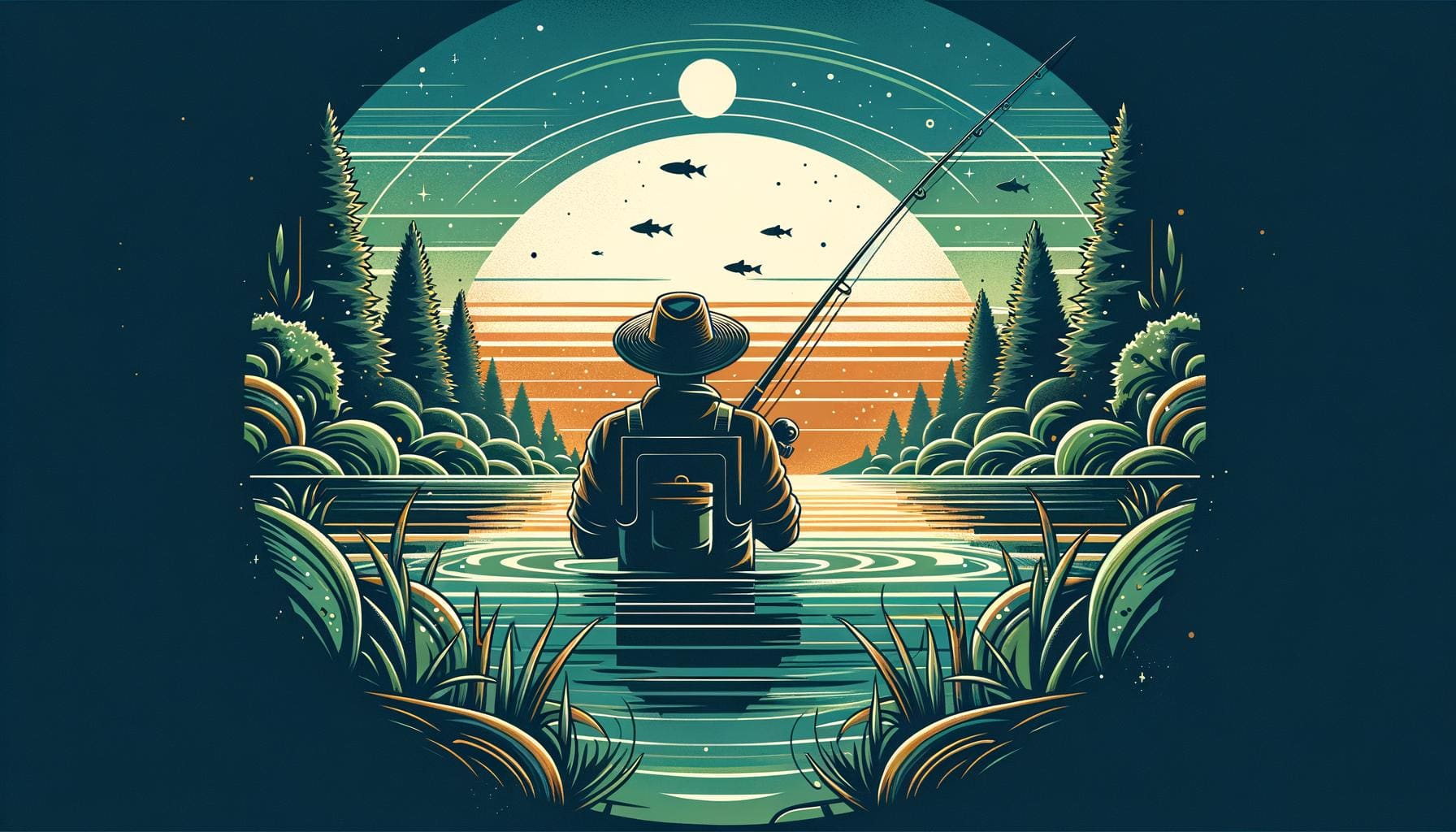Embarking on the journey of fishing can feel like deciphering an enigmatic script, especially for beginners. Yet, the key to unlocking this realm lies in mastering the art of reading the water—a skill pivotal for any angler aiming for success. Through understanding water conditions, recognizing fish behavior, and employing modern technology, this guide will equip you with essential tips to not just fish but to fish smart. Let’s dive into the currents of becoming proficient at reading the water, ensuring your fishing expeditions are fruitful and fulfilling.
Understanding the Basics: What Does Reading the Water Mean?
Reading the water is akin to a detective putting together clues to solve a mystery. It involves interpreting various environmental signals to predict where fish might be located. At its core, it’s about observing the water’s surface and beneath, understanding its dynamics, and using this knowledge to enhance your fishing strategy. This skill is not innate; rather, it is honed over time with experience and patience.
Key Elements to Observe:
- Surface Activity: Look for ripples, waves, or any unusual disturbances that might indicate the presence of fish.
- Water Flow: Notice the direction and speed of the water’s flow. Areas where the water slows down or changes direction often harbor fish.
- Submerged Structures: Identify natural and man-made structures like logs, rocks, or docks. These can be prime spots for fish seeking shelter or ambushing prey.
- Vegetation: Aquatic plants can serve as hotspots for various fish species. They provide oxygen, protection, and a rich feeding ground.
By paying close attention to these elements, anglers can significantly increase their chances of locating fish. Reading the water is essentially about understanding the aquatic environment from a fish’s perspective. This means predicting where fish are most likely to feed, rest, or hide.
Applying Observations to Fishing Strategy:
- Spot Selection: Choosing the right spot to cast your line is critical. Based on your observations, select areas with promising fish activity.
- Lure Selection: Different conditions call for different lures. Clear water might need subtler lures, while murky waters may require brighter or louder options to attract fish.
- Casting Techniques: Adjust your casting technique based on the water’s flow and wind direction to ensure maximum coverage of the area you believe holds fish.
Practice and Patience:
Developing the skill to read the water doesn’t happen overnight. It requires practice, observation, and learning from each fishing trip. Documenting your observations and outcomes can be an invaluable learning tool, helping you refine your approach over time.
Remember, reading the water is both an art and a science. It merges meticulous observation with intuitive understanding, enabling anglers to become more attuned to the natural world around them. By mastering this skill, you not only increase your chances of a successful catch but also deepen your connection with the environment, making each fishing expedition a richer, more rewarding experience.
The Importance of Observing Water Conditions
Successful fishing depends heavily on the angler’s ability to interpret the conditions of the water. Every aspect, from color and clarity to temperature, can provide crucial information that determines not just the day’s success but also enhances the overall fishing experience. Understanding water conditions is not just about reading the present environment but predicting potential changes and how they might affect fish behavior.
Key Factors to Consider:
- Water Clarity: Visibility beneath the water’s surface plays a significant role in selecting the right kind of bait and lure. Clear water usually means fish can see lures and baits from a distance, but it also means they can spot you. In murky waters, consider using lures that create vibration or noise to attract fish.
- Temperature: Water temperature affects fish metabolism and activity levels. Cool waters might slow fish down, while warmer temperatures could increase their activity. Seasonal changes in temperature will also influence where fish decide to feed and spawn.
- Color: Water color can indicate the presence of certain algae levels, pollution, or the type of bottom (sand, mud, vegetation). Each of these factors impacts which species of fish might be present.
Observing and Adapting:
- Seasonal Adjustments: Different seasons bring changes in water temperature and conditions, influencing fish behavior. Adjust your strategies accordingly, from the choice of bait to the fishing spot.
- Weather Impact: Sudden weather changes can dramatically affect water conditions. A storm might churn up the bottom, altering clarity and bringing nutrients (and fish) closer to the surface.
The Ripple Effect:
Observing water conditions is like putting together pieces of a puzzle. Each element, from the subtle ripples indicating a fish’s presence to the way wind affects surface currents, provides valuable clues. By enhancing your observational skills, you begin to understand the interconnected nature of the environment, which in turn helps in reading the water more effectively.
Learning Curve:
- Experience: The more time you spend on the water, the more intuitive reading these signs becomes.
- Research: Understanding the specific preferences and behaviors of the fish species you’re targeting can significantly aid in interpreting water conditions.
- Community Knowledge: Engaging with local fishing communities or forums can provide insights into how changes in water conditions affect fishing in your specific area.
Observing water conditions is a fundamental skill in fishing, crucial for making informed decisions about when, where, and how to fish. By paying close attention to the environment, anglers not only increase their chances of a successful catch but also contribute to a sustainable fishing practice by understanding and respecting the natural habitat. Whether you’re a seasoned angler or just starting, the time invested in learning to read water conditions is invaluable, enhancing both the yield and pleasure of your fishing endeavors.
Decoding the Water: Color, Clarity, and Temperature
Understanding the color, clarity, and temperature of water is crucial for any angler looking to improve their fishing success. These three aspects of water conditions can provide significant indications about where fish might be located, their activity levels, and the best fishing strategies to deploy.
Color
The color of the water can tell a lot about the current conditions and what lies beneath. Different colors can be indicative of:
- Green or Brown Water: Often implies the presence of plankton or algae, which can attract baitfish and, subsequently, predatory fish.
- Blue or Clear Water: Indicates deeper and possibly colder water, where fish might be found at greater depths.
Clarity
Clarity affects how well fish can see bait and lures, and it influences their behavior significantly:
- Clear Water: In crystal-clear water, fish can be more cautious, requiring more stealthy fishing methods and realistic lures.
- Murky Water: Visibility is reduced for both anglers and fish, making it necessary to use lures that create vibration or noise to attract fish.
Temperature
Temperature plays a pivotal role in determining fish behavior and habitat preference:
- Warm Water: Fish metabolism increases in warmer waters, often resulting in more active feeding habits.
- Cool Water: Cooler temperatures can slow fish down, making them congregate in areas where they can maintain a comfortable temperature.
Interpreting Conditions for Strategic Fishing
- Seasonal Patterns: Understanding how the aforementioned factors change with the seasons can guide when and where to fish. For example, warmer water near the surface in spring might attract fish from the colder depths.
- Location Selection: Knowing that certain species prefer certain temperatures and water conditions can help in choosing the best fishing spots.
- Lure and Bait Selection: Adjust your bait and technique according to the clarity and temperature. For instance, bright-colored lures for murky waters and subtle, natural baits for clear conditions.
Practical Application
Being able to decode the water’s color, clarity, and temperature helps in creating a more targeted and effective fishing strategy. This knowledge directs towards the right fishing spots, suitable baits, and lures, and informs the optimal time of day or season to fish. With practice, these insights become an integral part of an angler’s intuition, significantly enhancing their fishing experiences.
The Role of Currents and Tides in Fishing Success
Currents and tides are nature’s way of orchestrating the underwater world, significantly impacting where fish can be found and their feeding behaviors. For anglers, understanding these dynamic forces can be the difference between an ordinary day on the water and an extraordinarily successful fishing trip.
Understanding Currents
Currents, the continuous, directed movement of water generated by a variety of factors including wind, temperature differences, and obstacles, play a crucial role in the aquatic environment. They affect the distribution of nutrients and baitfish, thereby influencing predatory fish’s feeding patterns.
- Rip currents: Areas where currents converge can create rip currents, which are particularly fruitful fishing spots as they contain a concentration of baitfish.
- Obstacles: Natural and manmade obstacles disrupt the water flow, creating eddies where fish like to hold and feed due to the decreased current flow and increased food availability.
Tidal Influences
In coastal and estuarine environments, tides dictate the movement of water, significantly influencing fishing conditions. Tides are primarily caused by the gravitational pull of the moon and, to a lesser extent, the sun.
- High Tide: High tides offer the perfect opportunity to fish in areas that would usually be unaccessible, such as shallow flats or mangroves, as predatory fish move in to feed on organisms lifted by the rising waters.
- Low Tide: Conversely, low tides can concentrate fish in deeper channels or holes, making them easier to locate but potentially harder to approach stealthily.
Strategies for Currents and Tides
- Timing: Align your fishing trips with tidal changes. The period leading up to and immediately following a tide change often triggers increased fish activity.
- Spot Selection: Use local knowledge or maps to identify channels, inlets, or structures affected by currents and tides where fish are likely to congregate.
- Lure and Bait Presentation: Adjust your techniques to match the water movement. In strong currents, heavier lures or weights might be necessary, while in more subtle tides, a lightweight approach might be more effective.
- Safety: Always consider the strength of currents and the timing of tides, especially when fishing from a boat, to ensure safe return trips.
Remember:
The interplay between currents and tides creates a dynamic environment that can be your greatest ally with the right understanding and approach. By respecting these forces and adapting your strategies accordingly, you can significantly enhance your fishing success, exploiting the rhythmic dance of the ocean’s movements to your advantage.
How to Spot Fish-Holding Features in the Water
Identifying fish-holding features is a skill that can significantly increase your chances of a successful catch. These are areas where fish naturally congregate for feeding, shelter, or spawning. Recognizing these spots allows anglers to target their efforts more effectively.
Types of Fish-Holding Features
- Drop-offs and Ledges: Sudden changes in depth are hotspots for fish. They provide a variety of depths within a short distance, offering both feeding grounds and refuge.
- Underwater Structures: Sunken logs, rocks, or human-made structures like docks and piers provide shelter for smaller fish, which in turn attract larger predators.
- Vegetated Areas: Weeds, lily pads, and submerged trees attract fish by offering food and protection from predators. These areas can be goldmines, especially for bass and panfish.
- Confluence Points: Where two streams or currents meet, they create a mixing zone that attracts baitfish due to the concentration of nutrients, which predator fish follow.
Spotting Techniques
- Visual Inspection: Look for breaks on the water surface, changes in color, or visible structures. Birds diving can also indicate schools of baitfish below.
- Use of Polarized Sunglasses: Polarized glasses cut through the glare on the water surface, allowing you to see underwater features and fish more clearly.
- Electronics: Modern fish finders and sonar equipment can reveal structures, depth changes, and even directly show fish presence.
Tips for Approaching Fish-Holding Features
- Stealth Mode: When approaching these features, especially in calm or clear waters, do so stealthily to avoid spooking the fish. Use a trolling motor or paddle gently if in a kayak.
- Casting Techniques: Cast your bait or lure close to, but not directly onto, the structure to avoid entanglement. Allow it to sink or drift into the targeted area.
- Vary Your Tactics: If one approach doesn’t seem to be working, switch up your baits, lures, or retrieval speed. Fish may be present but not biting due to certain conditions or preferences.
Understanding and identifying these key features in the water will set the scene for a more focused and fruitful fishing experience. Whether it’s the shadowy depths beside a fallen log or the vibrant ecosystem around a weed bed, spotting these fish-holding features is an invaluable tool in an angler’s arsenal. Remember, patience and observation are your best allies.
Recognizing and Interpreting Fish Behavior and Patterns
Successfully reading the water involves not only identifying fish-holding features but also understanding the behavior and patterns of the fish themselves. Fish behavior can provide crucial clues about the state of the water, the weather, and the best times and places to fish.
Key Fish Behaviors to Observe:
- Feeding Patterns: Fish tend to feed more aggressively during certain times of the day, such as dawn and dusk. Their feeding can also be influenced by weather conditions, with some species more active just before a storm.
- Surface Activity: Fish jumping or causing ripples on the surface can indicate feeding activity. This can also attract attention to specific areas where baitfish are present, drawing in larger predatory fish.
- Schooling: Many species of fish school for protection and efficiency in feeding. Spotting a school can often lead to successful fishing, especially if you can identify the type of fish in the school.
- Seasonal Migrations: Understanding the migratory patterns of fish can greatly affect fishing success. For instance, knowing when salmon run upriver or when bass move into shallow water for spawning can inform effective fishing strategies.
Interpreting the Signals:
- Aggressive Bites: A sudden increase in aggressive bites can indicate active feeding. Adjusting techniques to capitalize on this behavior can increase catch rates.
- Followers: If fish are following the lure but not biting, it might be time to switch to a different lure or adjust the retrieval speed to match their current interest.
- Shifts in Location: Fish may move to different parts of the water based on temperature, time of day, and weather conditions. Recognizing these shifts can help in adjusting fishing spots effectively.
Practical Strategies:
- Keep a Journal: Documenting fish behavior, weather conditions, and fishing outcomes can help in recognizing patterns over time.
- Utilize Technology: Modern fish finders not only help in locating fish but also in analyzing their behavior, such as schooling or suspending.
- Observe Nature: Birds feeding on the water’s surface can signal feeding fish. Similarly, changes in wind direction can affect fish behavior, with some species preferring to swim with the current.
Understanding and interpreting fish behavior and patterns require both patience and practice. However, this knowledge is invaluable for improving fishing techniques and increasing the likelihood of successful catches. By paying close attention to these natural cues, anglers can refine their strategies to work in harmony with the rhythms of the aquatic environment, leading to a more productive and fulfilling fishing experience.
Top Tips for Reading Streams and Rivers for Freshwater Fishing
Freshwater fishing in streams and rivers can be exceptionally rewarding, offering a serene environment teeming with a diverse range of fish species. However, understanding how to read these dynamic waters is critical for any angler aiming to maximize their catch. Here are some top tips to help you navigate and fish these bodies of water more effectively.
Understand the Flow
- Identify the Thalweg: The thalweg is the deepest part of the channel where the current is typically the strongest. Fish often use this for migration and finding food.
- Look for Current Breaks: Objects like large rocks, fallen trees, or bends in the river create breaks and eddies where fish like to rest while still having access to the moving water’s food supply.
Recognize Key Habitats
- Riffles: Shallow areas with fast-moving water that oxygenate the water, attracting insects and small fish, which in turn attract larger fish.
- Pools: Deeper, slower-moving water where fish tend to congregate, especially during the warmer parts of the day or in colder weather.
Spot Feeding Zones
- Seams: The line where two currents meet and create a visible seam on the surface is often a productive feeding zone for fish.
- Foam Lines: Areas where foam accumulates on the water surface often indicate a convergence of currents that bring food, making them excellent spots for fishing.
Seasonal Considerations
- Spring: Look for fish in shallower areas as they move upstream for spawning. Warmer afternoons can be particularly productive.
- Summer: Focus on early mornings or late evenings and target deeper pools where fish retreat to escape the heat.
- Fall: This is a time of increased fish activity as they feed heavily in preparation for winter. Explore a variety of depths.
- Winter: Fishing can be challenging, but tailwaters below dams remain warmer and more active. Slow and deep is the way to go.
Watch for Wildlife
- Birds: Herons or kingfishers can often lead you to good fishing spots as they prey on small fish in the water.
- Insects: Hatches can indicate what fish might be feeding on, guiding your choice of lure or bait.
Use the Right Gear
- Lightweight Tackle: Use lighter lines and smaller hooks to match the generally clearer water and smaller size of river fish.
- Natural Baits and Lures: Mimic local insects, crustaceans, and baitfish with your lure selection for better results.
Reading streams and rivers requires a harmonious blend of observation, patience, and understanding of the freshwater ecosystem. By applying these tips and continuously learning from each fishing experience, you’ll enhance your skills and become adept at reading these beautiful but complex water bodies, leading to more successful freshwater fishing adventures.
Essential Techniques for Reading Coastal Waters for Saltwater Anglers
Saltwater fishing in coastal waters offers an exhilarating experience due to the diverse habitats and the vast array of species available. However, effectively reading coastal waters requires understanding unique environmental cues and adapting techniques specific to saltwater conditions.
Understanding Tidal Movements
- High Tide: Fish move closer to shore to feed on the critters in newly submerged areas, making estuaries, salt marshes, and mangroves prime fishing spots.
- Low Tide: Focus on deeper channels or holes where fish retreat as water recedes. These areas become concentrated zones of fish activity.
Reading Beach Structure
- Sandbars and Troughs: Look for changes in wave patterns that indicate sandbars; the troughs between sandbars can hold fish.
- Rip Currents: Areas where water returns to the sea create rip currents, identifiable by darker, choppy water. These can be hotspots for predatory fish feeding on the smaller fish brought out by the rip.
Spotting Signs of Life
- Bird Activity: Diving seabirds can often indicate schools of baitfish, which attract larger predatory fish below.
- Baitfish: Schools of baitfish jumping out of the water or creating disturbances on the surface are clear indicators that larger fish are feeding.
Currents and Wind
- Wind Direction: Pay attention to the wind direction as it affects wave formation and can push surface baitfish toward the shore, attracting predators.
- Ocean Currents: Warm or cold currents mixing can create ideal conditions for certain species. Current edges where different water masses meet are especially productive.
Utilizing Natural and Artificial Features
- Reefs and Wrecks: These provide habitat for smaller fish, attracting larger predators. Fishing around these structures can be highly rewarding.
- Jetties and Piers: Structures extending into the water break currents and provide shelter for fish, creating ideal spots for anglers.
Observation and Stealth
- Observation: Spend time observing the water before casting. Look for patterns in wave breaks, color changes in the water, and wildlife activity.
- Stealth: Approach fishing spots quietly and with minimal disturbance to avoid spooking fish, especially in clear or shallow waters.
Equipment Considerations
- Appropriate Gear: Heavier tackle may be necessary to handle the larger fish common in coastal waters. Corrosion-resistant gear is also a must due to saltwater’s corrosive properties.
- Lure and Bait Selection: Choose lures that mimic local baitfish or crustaceans. Live baits like shrimp and crabs can also be highly effective in coastal waters.
Reading coastal waters for saltwater fishing combines understanding environmental patterns with strategic fishing techniques. Each coastal environment presents unique challenges and opportunities, requiring anglers to be observant, adaptable, and knowledgeable about the local marine ecosystem. By mastering these essential techniques, saltwater anglers can significantly increase their chances of success and enjoy the rich rewards that coastal waters have to offer.
Utilizing Technology: Sonar and GPS for Enhanced Water Reading
In the modern fishing landscape, leveraging technology has become indispensable for enhancing water reading capabilities and increasing fishing success. Sonar (Sound Navigation and Ranging) and GPS (Global Positioning System) devices are at the forefront of this technological revolution, offering anglers sophisticated tools to locate fish and understand underwater structures more effectively.
How Sonar Works
Sonar systems emit sound waves that bounce off objects under the water, including the bottom, structures, and, importantly, fish. The returned “echoes” are interpreted by the device to create a visual representation of the underwater environment on a screen. This technology enables anglers to:
- Identify Fish: Locate schools of fish or individual targets with incredible precision.
- Understand Bottom Composition: Differentiate between soft mud, sand, rocks, and vegetation.
- Find Structures: Discover underwater features like drop-offs, ledges, wrecks, and submerged trees where fish congregate.
Best Sonars available for sale:
| Sonar Model | Photo | Features | Ideal for | Link |
|---|---|---|---|---|
| Garmin Striker 4 | 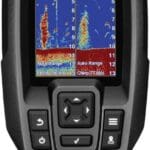 |
Dual-frequency sonar, GPS, waypoint map | Freshwater and saltwater | Buy |
| Humminbird HELIX 5 Fish Finder | 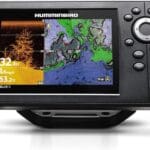 |
CHIRP Digital Sonar, GPS, AutoChart Live | Freshwater | Buy |
| Lowrance HOOK Reveal 5 | 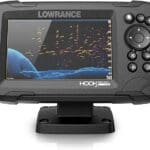 |
FishReveal™, GPS Plotter, Genesis Live | Freshwater and saltwater | Buy |
| Raymarine Dragonfly 7 Pro | 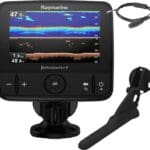 |
CHIRP DownVision™, Wi-Fi, GPS, Navionics+ | Freshwater and saltwater | Buy |
| Deeper PRO+ Smart Sonar | 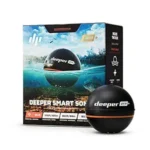 |
Castable, GPS, Wi-Fi, compatible with smartphones | Shore, boat, ice fishing | Buy |
| Simrad Cruise 7 | 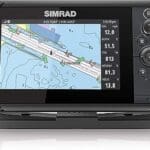 |
Touchscreen, CHIRP sonar, radar capability | Offshore fishing | Buy |
| Garmin ECHOMAP UHD2 63sv | 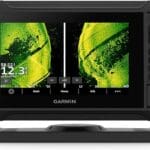 |
ClearVü scanning sonar, CHIRP sonar, LakeVü g3 maps | Freshwater and saltwater | Buy |
| Humminbird PIRANHAMAX 4 DI | 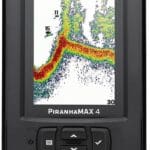 |
Down Imaging sonar, Dual Beam sonar | Freshwater | Buy |
Advantages of GPS Technology
GPS technology uses satellites to provide precise location information. Integrated with sonar, GPS allows anglers to:
- Mark Productive Spots: Save the coordinates of successful fishing locations to easily return to them.
- Navigate Safely: Map routes in and out of fishing areas, even in poor visibility conditions.
- Track Movement: Monitor the drift or trolling speed to ensure it matches the preferred speed for the targeted fish species.
Combining Sonar and GPS for Optimal Results
Most modern fish finders combine sonar with GPS, offering a powerful tool for anglers. This integration allows for:
- Mapping and Charting: Create detailed maps of uncharted or poorly mapped waters, noting depth changes and potential fishing hotspots.
- Waypoint Management: Efficiently manage hundreds of waypoints to mark spots, paths, and structures.
- Overlay Data: Use GPS data to overlay speed, direction, and location information onto the sonar feed for a comprehensive view of the fishing environment.
Tips for Maximizing Technology Use
- Regular Updates: Keep the device’s software updated to ensure access to the latest features and improvements.
- Customization: Familiarize yourself with the settings and customize the displays to suit your fishing needs and preferences.
- Learn from Others: Join forums or social media groups focused on sonar and GPS usage in fishing to share experiences and learn from the community.
The Future of Fishing Technology
As technology continues to evolve, so too do the tools available to anglers. Innovations like 3D sonar imaging, side-scan capabilities, and integration with mobile devices are pushing the boundaries of what’s possible, offering even more detailed and accessible data to enhance water reading skills.
Utilizing technology like sonar and GPS transforms the fishing experience, turning guesswork into a strategic pursuit. By mastering these tools, anglers can not only increase their catch rates but also gain a deeper understanding of the aquatic environment, contributing to more informed, responsible, and successful fishing practices.
Adapting Fishing Strategies Based on Water Conditions
Success in fishing often hinges on the angler’s ability to adapt their strategies to the ever-changing water conditions. Whether it’s the clarity, temperature, or the presence of structures, understanding how to modify your approach can significantly improve your catch rate. Here are key strategies for adapting to various water conditions:
1. Water Clarity Adjustments
- Clear Water: In crystal-clear conditions, opt for natural-colored baits and lures that mimic the local forage. Stealth is crucial; use lighter lines and approach fishing spots with minimal disturbance.
- Murky Water: Bright or noisy lures can be more effective in low visibility. Consider using scented baits to attract fish through their sense of smell.
2. Responding to Temperature Changes
- Cold Water: Fish are less active in colder temperatures. Use slow-moving baits and lures, and focus on deeper waters where fish may be congregating for warmth.
- Warm Water: Activity levels increase with temperature. Fast-moving lures and topwater baits can be effective for enticing strikes from aggressive fish.
3. Current and Tide Considerations
- Strong Currents: Heavier tackle may be necessary to maintain bait positioning. Look for areas where fish rest out of the current, such as behind large objects or in slower pools.
- Changing Tides: Align your fishing times with tidal movements. High tides can bring fish closer to shorelines and into estuaries, while outgoing tides concentrate fish in channels.
4. Structural Adaptations
- Vegetation: Weedless lures or rigs can help avoid snags. Focus on the edges of vegetated areas where fish may be patrolling for food.
- Rocky Bottoms: Use bottom bouncing techniques with rigs designed to withstand abrasion. Soft plastics worked along the rocks can lure out hiding fish.
5. Weather-Driven Strategies
- Overcast Conditions: Low light levels can make fish more active and less cautious. This is an ideal time to experiment with topwater lures or more aggressive tactics.
- Bright Sunny Days: Fish may seek shade and deeper waters to escape the heat and brightness. Focus on shaded areas or adjust to fishing at dawn and dusk.
Practice and Observation
Adapting to water conditions is not just about changing gear or tactics; it’s also about honing your observation skills and learning from experience. Keeping a fishing journal of the conditions, what worked and what didn’t, can be an invaluable tool for refining your strategies. Connect with local fishing communities or forums to share insights and learn from others’ experiences.
By being adaptable and responsive to the water conditions, you empower yourself to make the most of each fishing session, increasing your enjoyment and success rate in this rewarding outdoor activity.
Case Studies: Successful Anglers Share Their Water Reading Experiences
Learning from the experiences of successful anglers can provide invaluable insights into the art of reading water and adapting strategies to various conditions. Here are a few case studies that highlight how seasoned anglers have leveraged their understanding of water dynamics to achieve remarkable fishing success.
Case Study 1: The River Master
- Angler: Matt Johnson
- Location: Upper Mississippi River
- Key Strategy: Utilizing river currents and structure
- Outcome: Consistent catches of large smallmouth bass
Matt Johnson has mastered fishing the complex currents of the Mississippi River. He carefully observes water clarity and flow, targeting eddies and slack water behind large boulders or downed trees. Matt’s approach involves using light spinning gear with natural-colored soft plastics to mimic the crayfish and baitfish that bass in these areas feed on.
Case Study 2: The Saltwater Sage
- Angler: Sarah Kim
- Location: Florida Keys
- Key Strategy: Reading tidal movements and water temperature
- Outcome: Impressive catches of tarpon, bonefish, and permit
Sarah Kim’s success in the saltwater flats around the Florida Keys is a testament to the importance of understanding tides and water temperature. By planning her outings around the incoming and outgoing tides, and selecting flies and lures that match the prevalent baitfish, Sarah has been able to consistently hook into some of the most elusive saltwater game fish.
Case Study 3: The Lake Expert
- Angler: Jake Thompson
- Location: Lake Tahoe
- Key Strategy: Deep water thermocline fishing
- Outcome: Trophy-sized lake trout
Jake Thompson specializes in deep water fishing in Lake Tahoe, targeting the thermocline where lake trout are most active. Using sonar technology to identify the thermocline and mark fish, Jake then vertical jigs with heavy spoons or uses downriggers to troll just above these depths. This precise approach has led to many trophy catches over the years.
Key Takeaways from Successful Anglers
- Observation is Key: Spending time on the water observing how different conditions affect fish behavior is crucial.
- Technology is Your Friend: Modern sonar and GPS technologies are invaluable tools for finding fish and understanding underwater structures.
- Adaptability: Being flexible and willing to change tactics based on what the water tells you can significantly improve your success rate.
- Learn Local Patterns: Each body of water has its own set of rules. Understanding the local ecosystem and seasonal patterns can give you an edge.
These case studies underline the diverse approaches and the necessity of being in tune with the environment to excel in fishing. By learning from the experiences of others and applying these insights, budding anglers can significantly enhance their water reading skills and increase their chances of a successful catch.
Practicing Your Skills: Getting Started with Reading the Water
Mastering the art of reading the water is a journey that encompasses observation, learning, and plenty of practice. For beginners eager to develop this invaluable skill, starting with a few fundamental practices can pave the way to becoming proficient anglers. Here’s how you can begin honing your water reading skills effectively.
Start with Observation
Begin your practice sessions without a rod in hand. Spend time observing the water’s surface, noting any irregularities, movements, or patterns. Look for ripples, currents, or any signs of fish activity. Pay attention to how the water flows around objects, like rocks or logs, creating areas of calm or turbulence.
Understand the Environment
- Study the Area: Research the body of water you plan to fish in. Understand its ecosystem, predominant fish species, and their habits.
- Seasonal Changes: Recognize how different seasons affect water conditions and fish behavior. Each season brings changes in temperature, water levels, and fish activity.
Practice Identifying Features
Equip yourself with a map or use online resources to identify key features of the water body. Look for:
- Underwater Structures: Note locations of rocks, fallen trees, or changes in depth.
- Vegetation Areas: Identify weed beds or submerged plants that could hide fish.
Technological Tools
While traditional observation is vital, don’t shy away from using technology to supplement your learning.
- Use a Fish Finder: Start with basic sonar to get accustomed to identifying fish and structure.
- GPS Apps: Familiarize yourself with navigation apps or devices to mark and return to promising spots.
Practical Fishing
Apply your observations and learnings in real fishing scenarios.
- Vary Your Techniques: Try different fishing techniques based on your water reading. Experiment with lure types, casting distances, and retrieval speeds.
- Keep a Log: Document your outings, including water conditions, weather, the techniques used, and the outcomes. Over time, this log will become a valuable learning tool.
Join a Community
- Learning from Others: Join local fishing clubs or online communities. Engaging with other anglers can offer new insights and tips for reading water and improving your techniques.
Set Realistic Goals
- Focus on Learning: Rather than measuring success only by the number of catches, focus on what you learn about water reading and fishing with each outing.
Practicing the skill of reading the water is a continuous learning process that evolves with experience. By starting with these foundational steps, keeping an open mind, and staying patient, you’ll develop a keen sense for reading various water bodies, leading to more productive and enjoyable fishing experiences. Remember, every angler’s journey is unique, and the water always has more to teach.
Embarking on Your Fishing Journey
With the horizon of your fishing adventures broadening, remember that mastering the art of reading the water is a continuous learning curve. Every stream, river, and coast offers a unique story and understanding its nuances can transform your fishing experiences from mere attempts to memorable catches. Utilizing technology like sonar and GPS alongside traditional observation skills can significantly enhance your ability to read the water. Case studies of successful anglers have shown that patience, observation, and adaptability are your greatest allies. As you practice and refine your skills, remain open to the lessons each water body has to teach. Whether you’re wading through a serene stream or casting your line into the vast oceans, the knowledge and tips shared here aim to serve as your compass. Happy fishing, and may your journey be filled with plentiful catches and tranquil waters that speak to you.

